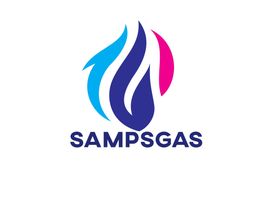



Central Heating System.
A central heating system has pipework and radiators which are connected to a boiler. The boiler provides the heat and the pump moves heated water from the boiler through the pipework to the radiators, and back to the boiler for reheating. It also provides hot water to the hot taps in your home.
There are generally two types of boiler:
- A conventional boiler - this system has a pump, a programmer and a room thermostat. You can control the heating and hot water separately by using the programmer. It heats hot water and stores it in a cylinder, usually found in your airing cupboard.
- A combination (combi) boiler - this system has a programmer and a thermostat. It only needs to control the heating, as it heats hot water on demand. Hot water is available whenever you turn on the hot water taps and so does not need a cylinder to store it in.
Central heating controls
Depending on the type of system you have, central heating and hot water controls may vary.
Room thermostat
The room thermostat is used to set the temperature of your home. It does this by sensing the temperature around it and is usually found in the hall, lounge or dining room. When the air around the thermostat reaches the set temperature, it sends a signal to the central heating pump and boiler to stop sending hot water around the system. Your radiators will then cool down. When the air cools, the thermostat sends another signal to the system to start pumping hot water to your radiators again.
At different times throughout the day your radiators will feel cooler and warmer to keep the temperature constant.
Many people set their thermostat between 18oC and 21oC and then adjust it to suit them, depending on how warm or cool they feel. Remember, if you turn down your thermostat by 1oC, you can save about £65 per year on your fuel bill. Turn down the thermostat but make sure you are still feeling comfortable.
Thermostatic radiator valves
These valves are fitted to individual radiators and control the temperature of the room they are in. They shut off the flow of the water to the radiator when the desired temperature is reached. Valves are often fitted to radiators in every room, apart from the bathroom and hall or the room where the room thermostat is fitted.
They can be found at the side of the radiator, are usually white and have a dial with numbers *12345 running around them. People often set the valve to the middle setting (3), which is about 20oC and see if the room is warm enough.
It’s not a good idea to turn them fully 'ON' or fully 'OFF' to make the room warmer or cooler as this will waste fuel.
Programmer
The programmer is a control panel which allows you to set the time you want your heating and hot water to come on and go off. Depending on the type of programmer, you may be able to choose whether you want heating only, hot water only or both heating and hot water. Note: If you have a combi boiler, the panel sets the heating only.
You can set it to turn the heating on once or twice a day, on continuously or completely off. Most people set it to come on twice a day – once in the morning and once in the evening. Set your system to come on about 30 minutes before you want the house to be warm and 30 minutes before you want it to cool off.
There are 2 types of programmer:
- Digital/electronic - If you have had a new boiler in the last few years, you will probably have a digital programmer to set your central heating. This is often found in your airing cupboard, hall or kitchen
- Time clock – These programmers have a clock with either sets of pins or arrows to set your heating
Note: You may have to reset the programmer when the clocks change in the winter and summer, and also after a power cut.
If you need to reset your programmer, you can use your programmer user manual. If you haven't got a programmer user manual for your system, search on-line for a copy or phone the Housing Repairs team and we can send you one.
Boiler thermostat
This controls the temperature of the water going around the radiators and should be set according to the manufacturer’s instructions contained on the boiler itself. Combination boilers have two: one for heating and one for hot water.
Cylinder thermostat
If you have a hot water cylinder, it will be fitted with a cylinder thermostat to control the temperature of the hot water. This should be set to a temperature of around 60°C (104°F).
Sampsgas Domestic Services Ltd. can help you with all your Central heating requirements.
